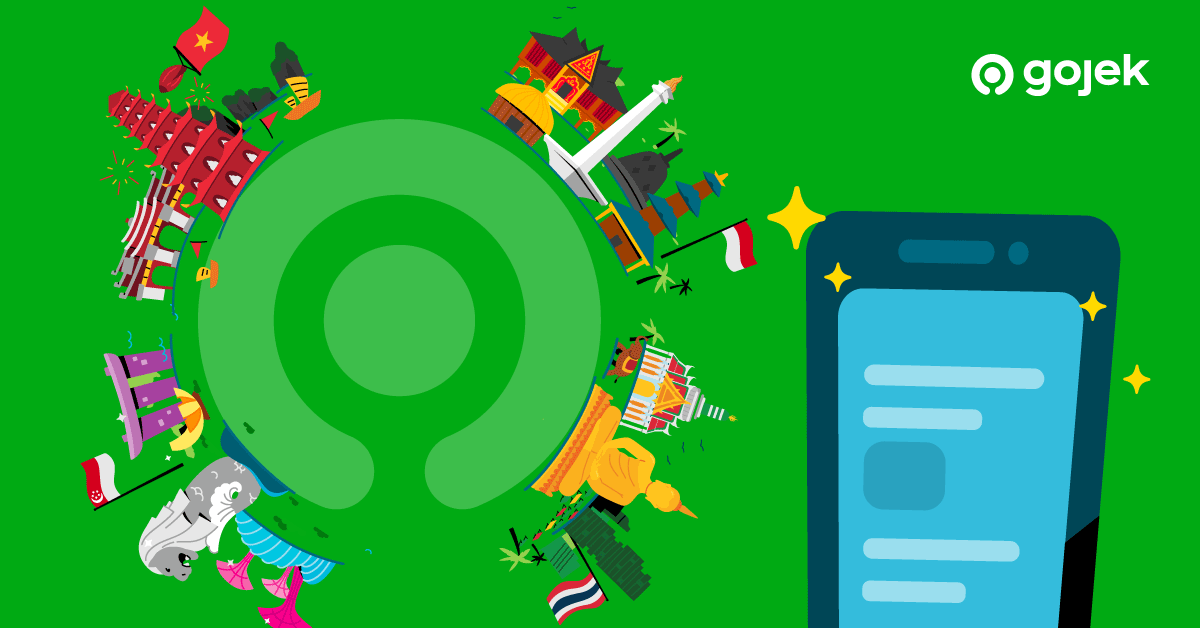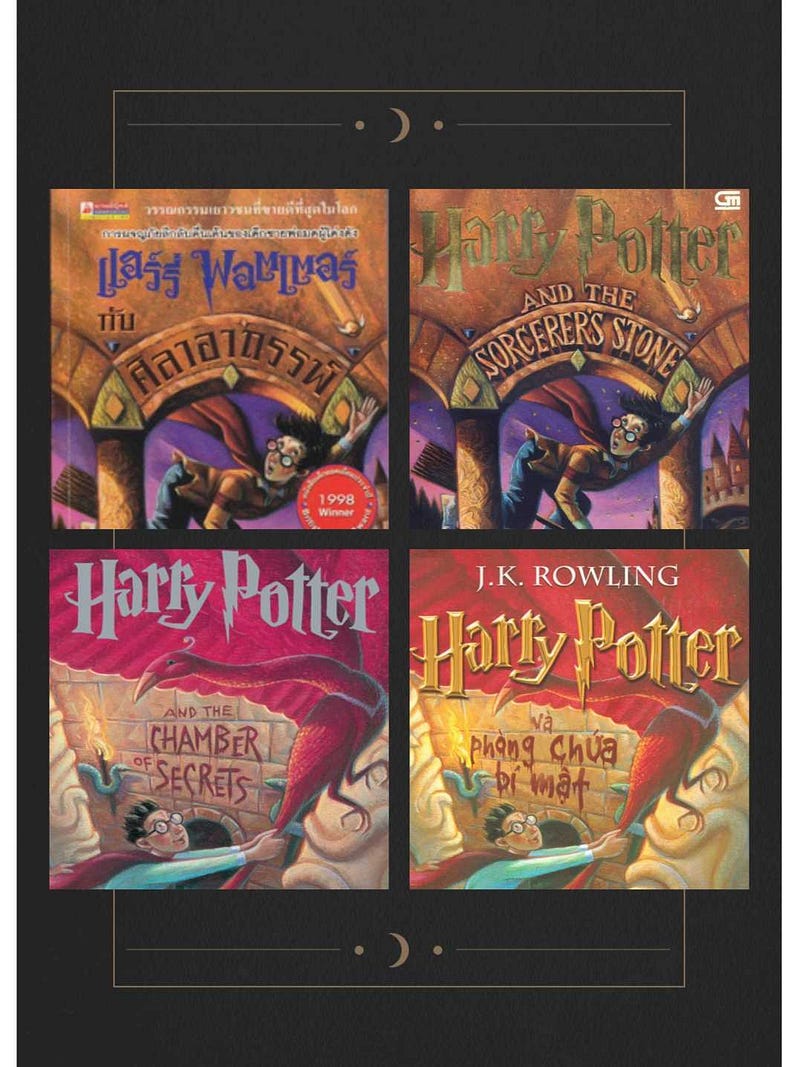Language No Bar: How We Localise UX Copies At Gojek
With products in four countries, here's how our UX Writing team localises copies based on demography.

By Nhut Nguyen and Saranchitr (Ja) Bijaisoradat
Gojek is operational in four countries in Southeast Asia: Indonesia, Singapore, Thailand, and Vietnam. Going international is only one part of the story. The real challenge is localising the product to cater to multiple demographies.
When it comes to mobile apps, assuming English to be the default language of communication is a mistake. A terrible one at that. 🙅♀️
It’s important for users to use an app in the language of their choice. No barriers. No frictions.
This is the story of how we, the UX Writers in Thailand and Vietnam, go about localising UX copies to clearly guide our users in these countries.
There’s a common misconception about our job: Translating an English copy into our local languages — either Thai or Vietnamese. As time went by, we ourselves realised there’s much more to this.
Gojek is witty, emphatic, empathetic, and helpful. So are our copies. Merely translating will serve less to no purpose for our audience. Localisation of copies is the key.
Localisation vs Translation: What’s the difference?
Translation is the process of rendering text from one language into another, so that the meaning is equivalent. Localisation is a more comprehensive process which addresses cultural aspects, non-textual components, and linguistic issues when adapting a product or service for another country or locale.
Was that too… textbook? Let’s make it… novel. 😜
Harry Potter is a series we all enjoyed as kids (or still do as adults). If you don’t come from an English-speaking country, we believe you still enjoyed reading the book in your local language (we sure did!). 🧙♀️
Growing up, although we read the series in Thai and Vietnamese, we knew we were reading the exact same story. So now, we’re able to geek it out together, despite our difference in nationalities.
Ly Lan, a Vietnamese writer, translated the Harry Potter series into Vietnamese. But, she didn’t just translate it word by word. She retold the story in her own way and everything was made to fit into the Vietnamese customs. From the way teen wizards call each other, to the names of magical objects. She used new expressions in the story, like slang, idioms, funny words that locals and those who know the culture would understand.

Ly Lan’s version was loved by many Vietnamese children because it felt so close and relatable. We believe this also happened in Thailand, Indonesia, Singapore, and anywhere English isn’t the official language. Localisation was the reason the series is loved by many people, worldwide.
Localising a mobile app is more or less the same with localising Harry Potter.
As UX Writers, we don’t just translate, but we need to understand the product’s context, user’s pain points, and design flow. We also need to gather feedback from stakeholders so the copy is not biased.
A day in the life of an international UX Writer
Our workflow usually starts with the English copy being handed to us. So, when there’s a new feature, we made sure the English copy is ready and only use it as a reference. The English copy is a starting point to explore our communication approaches so we can connect more with local users.
Here are 5 key points that we make sure to present when localising the copy:
1. Context is key
We need to understand the objective of the feature clearly to localise the languages. Knowing the design flow and current user’s state will be a huge help to decide which communication style is suitable for that particular feature.
We need to know:
- What the business/product team wants to communicate
- How the Product Designer and Interaction Designer display the information visually
- How users would react upon receiving this information
The point is to gather as much information about the copy as possible — even if we’re making a copy just for a button.

We need to choose the words carefully (oftentimes, it has to be backed up with research and testing) because we’re guiding users to complete their tasks. Hence, literally translating every word isn’t the way to go. Sometimes, a word could have a different context when we put it together in a sentence.
If we were not provided with enough information about what was requested, it’s our job to ask our Project Manager (PM), Product designers (PD), or developers (devs). For international writers, knowing the context is crucial. If we didn’t, we wouldn’t know anything about what we’re going to localise.
2. Localising = “translating” contextually
In the localised version of Harry Potter, the translator made sure to use idioms, slangs, expressions relatable for local kids, so they can understand and connect with the story. This same idea is the foundation of our works.
Let’s start with the success of the Gojek brand in Indonesia. One of the biggest factors for our success is how we use local references. Our communication style is well received because the app sounds like a friendly local Indonesian — someone who loves to joke around but will always be there when you need them. So, we try to replicate the formula in our countries.
To make our customers feel close to us, we write the copy like how a local Vietnamese or Thai would converse on a daily basis. And when we try to localise a joke, we don’t “translate” the joke, but we translate the emotion, the feeling users will get when they hear that joke. The translation might sound very different in each country, but we always try to entice the same level of energy.
Let’s take this error copy of Server Busy in GoRide/GoCar (our Transport products) as an example.

It can be frustrating for customers when they come across this error message, especially when they’re in a hurry. Empathising with the users, we think of how we should break the message to them without shooting their anxiety level through the roof. So we tried to insert a witty copy to make the message more tolerable.
In English, we used “OMG… Server busy” to make the message more conversational. We tried this copy to tone down a user’s anxiety, by sharing the expression of surprise about the error that occurred.
While in Indonesian, we use “Server padat merayap” as a metaphor for server error. We adapted it from local terms/jokes often being said whenever one’s stuck in a traffic jam.
In Vietnamese, although the title caters to a feeling of an unexpected error, we want to assure customers we acknowledge the error and are fixing it right away. We also seasoned it with a sprinkle of optimism to lighten the mood (Thử lại sau nhé! means something on the lines of Try again later ya! with an uplifting tone).
However, it is quite different for Thai. The copy used here is “ขออภัย ระบบขัดข้องชั่วคราว” which means “Sorry, there’s an error with the system”. Thai locals prefer a more subtle approach as it is a problem caused by the app and the customers would expect us to hold responsibility to fix the issue on hand.
As much as we want to be funny or conversational, we need to always be clear and helpful. We might play with the title in this message, but we make sure the term/joke we use is easily understood.
We also gave users’ assurance that our team is trying to solve their problems ASAP. We are trying to be helpful even though there’s no perfect solution to their problems.
Our approach to localising copies is tied to our UX Writing Principles: Clear, Concise, Helpful.
3. Hacking long, translated sentences
Even though our main job is to localise the copies, we do UX Writing too. While following the UX writing principles, most times, being concise becomes our main challenge.
When we localise English sentences to local languages, the translation usually is longer, and there’s only a small space for copy in the app. Length is a crucial (and painful) point to consider.
For example of the feedback form for Transport, to make sure our live tracking feature worked properly. However, the word “live tracking” doesn’t have a direct translation in Indonesian, Vietnamese, and Thai. So how did we communicate this?

To crack this, we collaborated with researchers.
Since we can’t translate “live tracking” directly, we need to know how users understand the word “live tracking” in their local languages. The best team to discuss this matter was the research team since they’d done the usability testing when we built the live tracking feature back then.
Apparently, local users prefer to call “live tracking” as “driver position” or the “moving driver icon” when asked to define what a live tracking feature really is. Knowing this, we made an informed decision to translate “live tracking” as “driver’s position” in Indonesian, Thai, and Vietnamese.
The context is the same and it’s been proven that users understand what it means. This is how we communicate it in our local languages:
Live tracking feedback
EN: How’s the live tracking?
ID: Posisi driver akurat, kah? (Is the driver’s position accurate?)
VN: Định vị tài xế thế nào? (How’s the driver’s tracking?)
TH: ตำแหน่งคนขับถูกต้องแล้วใช่ไหม? (The driver’s location is correct, right?)
As you can see, the wordings and grammar of the same sentences are quite different for each language. But, contextually, it refers to the same message.
4. A unified tone of voice across countries
The tone of voice we use on the app is extremely important. It defines who we are.
When JK Rowling created Harry Potter, Harry’s actions inspired us to be a little more braver each time we saw him go through dangerous and exciting adventures. These adventures made him memorable for the readers. A similar thought applies when we create a copy in the app.
We need to establish a unique voice to stand out and be etched in our users’ memories.
Since Gojek has 3 Super Apps — One each for consumers, driver partners, and merchant partners. Needless to say, every app has different tones of voices.
For consumer apps, we use a witty, cheerful, and casual tone. We want to establish the unique Gojek character as well as bond with our users more, so the relationship doesn’t feel like a user and an app. We want to be the user’s helpful best friend. For our driver and merchant partner apps, the tone of voice is quite different as it will sound more formal and business-like as our relationship is quite different from our users.
5. Proofreading is important!
There will be times where there are typos or misunderstandings. Sometimes we just miss out on these mistakes and it’s only human. But, of course, this is not what customers will expect to find. We ensure we read and re-read our copies multiple times before we take it live.
Localisation is like an adaptation
We’d like to imagine our localisation as adaptations. If the English and Bahasa copy are the original books, our local copies are the local adaptions of them. The story is still there, but there are changes in the character’s past, protagonist’s decisions, or looks, to match the demography.
It’s a critical responsibility to handle UX Writing for all our products and representing our countries. And we could do with some help. Check out our careers page to see the right fit for you.

To read more stories from the vault, check out our blogs.
